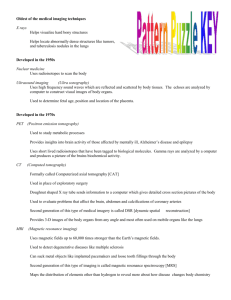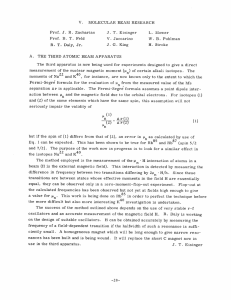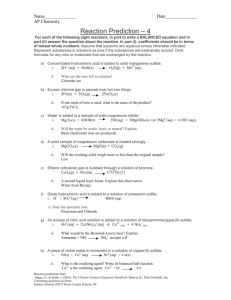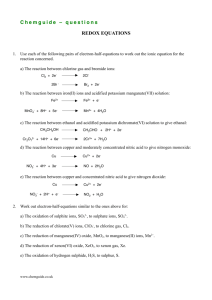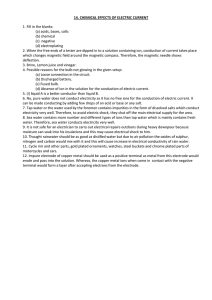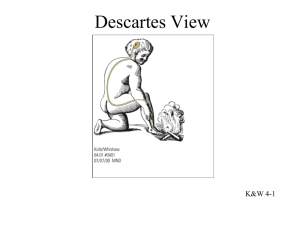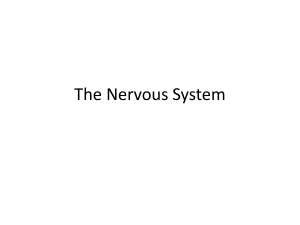File
advertisement
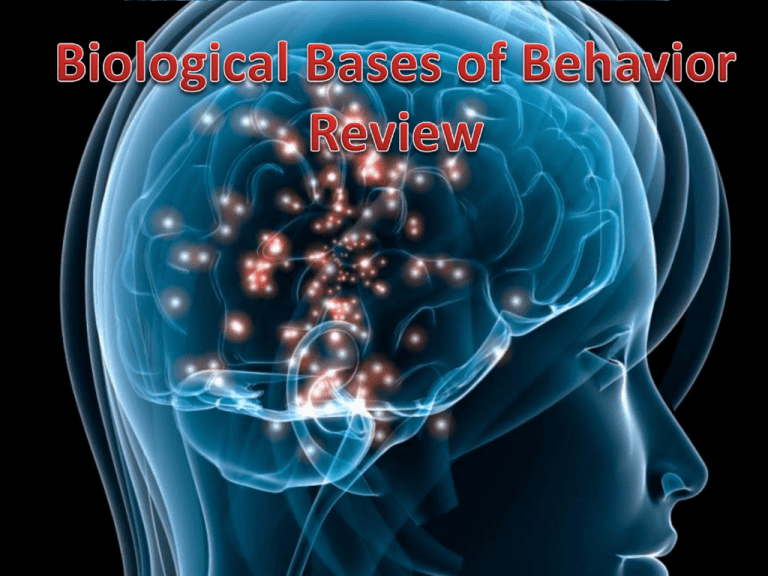
Topics in this Unit: • • • • Neurons and Neurotransmitters Central Nervous System and Parts of the Brain Endocrine System (glands and hormones) Peripheral Nervous System (somatic, autonomic, sympathetic, and parasympathetic) • Brain Plasticity, Lateralization, and Cognitive Neuroscience • Genetics • Important Psychologists Resources • http://quizlet.com/6556322/unit-3-biologicalbases-of-behavior-flash-cards/ • Notes http://psych.wisc.edu/braun/281/Biological/Biolo gicalNotes.htm • Quizzes http://www.proprofs.com/quizschool/story.php?title=biological-bases-behavior • More Quizzes http://www.learnerator.com/appsychology/biological-bases-ofbehavior/neuroanatomy/questions/speech Diagram of a Neuron Video tutorial Neuron Definitions • Resting potential-positive ions on outside, negative ions on inside (waiting for impulse-PONI) • Action potential-brief electrical charge (impulse) traveling down an axon • Depolarization-domino effect when positive ions come in and negative ions come out, so that impulse can travel down axon • Refractory period-after impulse is done, ions get pumped back into place (positive outside and negative inside) • Threshold-minimum level of intensity needed to trigger action potential – all or nothing response Brain Definitions • Plasticity-refers to a young brain’s ability to “self-heal” or recover after damage • Hemispherization/Lateralization-refers to brain’s unique left side/right side functions • Cognitive neuroscience-interdisciplinary study of the brain activity linked with our mental processes Types of Brain Imaging • Electroencephalogram (EEG)-recording of brain waves showing electrical activity in brain • Computed tomography scan (CT)- shows X-ray slices of brain to detect damage • Positron emission tomography scan (PET)-displays brain activity of glucose while performing a given task • Magnetic resonance imaging (MRI)-uses magnetic fields and radio waves to produce computer generated images of soft tissue • Functional magnetic resonance imaging (fMRI)type of MRI that reveals brain function and structure Important Psychologists • Paul Broca-experiments with patient who could only say “tan;” research reveals damaged location in brain that disrupts speaking • Charles Darwin-evolution • Michael Gazzaniga-split brain research by severing corpus callosum • Roger Sperry-split brain research in cats • Carl Wernicke-revealed location in brain that disrupts understanding in language
